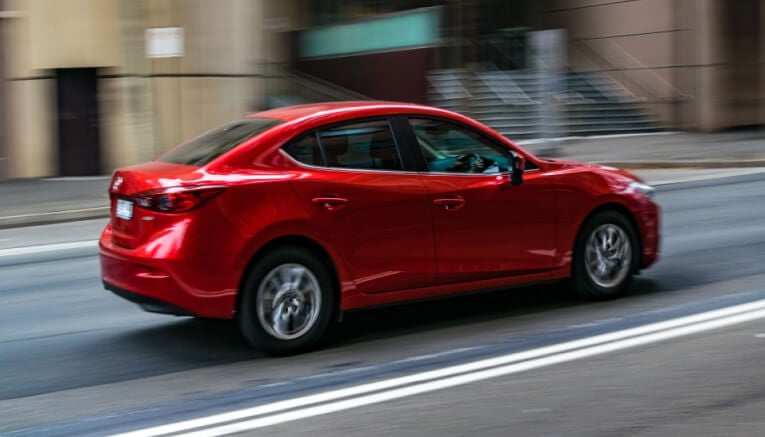Companies with employees who drive for work are often faced with a big question – what mileage reimbursement method should they use? There are a number of common ones, including cents-per-mile, FAVR, and, the topic of this article, car allowance.
If you’re exploring whether a car allowance program might be right for your business, you’re in the right place. Let’s explore what car allowance programs are, who they’re right for, how to implement them, and more.
What is a Car Allowance?
A car allowance is a fixed amount of money provided by an employer to an employee to cover the costs associated with using a personal vehicle for work-related purposes. This sum is typically paid out regularly, often monthly, as part of the employee’s compensation package.
Key Components of Car Allowance Programs
Car allowances generally aim to cover:
- Fuel costs
- Vehicle maintenance and repairs
- Insurance premiums
- Depreciation
It’s important to note that car allowances are distinct from other forms of vehicle reimbursement. Unlike mileage-based reimbursements, car allowances remain constant regardless of the actual miles driven for work.
Related: Mileage Reimbursement Explained | How To Set Up a Mileage Reimbursement Policy for Your Business
One of the primary advantages of car allowances is the flexibility they offer employees. Recipients can use the funds at their discretion, whether for vehicle-related expenses or other personal needs.
How Car Allowance Programs Work
Most companies implement car allowances as a fixed monthly payment. This amount is typically added to the employee’s regular paycheck, simplifying the administrative process.
Expense Coverage
While the allowance is intended to cover vehicle-related expenses, there’s usually no requirement for employees to provide receipts or documentation. This hands-off approach can be both a benefit and a drawback, depending on the perspective.
Variations in Allowance Structures
Flat Rate Allowances
The most common type of car allowance is a flat rate. All eligible employees receive the same amount, regardless of their specific role or travel requirements.
Tiered Allowances
Some companies opt for a tiered system. This structure provides different allowance amounts based on factors such as:
- Job role
- Seniority
- Expected mileage
Hybrid Systems
A few organizations use hybrid systems, combining a base car allowance with additional reimbursement for high-mileage employees. This approach aims to balance simplicity with fairness.
Related: What Do Most Businesses Pay for Mileage Reimbursement? | How Much To Reimburse Your Drivers’ Mileage
Eligibility Criteria for Car Allowance
Not all employees typically qualify for car allowances. Eligibility often depends on:
- Job requirements
- Frequency of travel
- Position within the company
Companies usually outline these criteria in their vehicle reimbursement policies.
Average Car Allowance Amounts in 2024
Car allowance amounts can vary significantly across industries and companies. In 2024, the average car allowance typically ranges from $400 to $600 per month.
However, it’s important to note that this figure hasn’t changed much in recent years. Despite fluctuations in fuel prices and vehicle costs, many companies have kept their allowance rates static.
Factors Affecting Allowance Rates
Several factors influence the amount a company might offer:
- Industry standards
- Company size and budget
- Employee role and seniority
- Expected mileage or travel frequency
Some organizations adjust their allowances based on local cost of living or specific regional factors. For instance, employees in urban areas with higher fuel and parking costs might receive a larger allowance.
It’s worth noting that while the average allowance has remained relatively stable, this doesn’t necessarily mean it’s keeping pace with actual vehicle-related expenses. Employees should carefully consider whether their allowance adequately covers their work-related vehicle costs.
Related: Standard Mileage Deduction vs. Actual Expenses Method Explained
Tax Implications of Car Allowances

Understanding the tax implications of car allowances is important for both employers and employees. These implications can significantly affect the net benefit of the allowance.
For Employees
Car allowances are generally considered taxable income by the IRS. This means that employees will see a portion of their allowance deducted for federal and state taxes, as well as Social Security and Medicare.
For example, if an employee receives a $500 monthly car allowance, their actual take-home amount might be closer to $350-$375 after taxes. This reduction in net benefit is an important consideration when evaluating the value of a car allowance.
For Employers
From an employer’s perspective, car allowances are typically tax-deductible as a business expense. However, employers are required to withhold payroll taxes on the allowance amount.
Pros and Cons of Car Allowances
Like any compensation method, car allowances have their advantages and disadvantages.
Advantages
- Simplicity: Car allowances are easy to administer and understand.
- Predictability: Both employers and employees know exactly how much will be paid each month.
- Flexibility: Employees can use the allowance as they see fit, without needing to provide receipts or mileage logs.
Disadvantages
- Tax inefficiency: As mentioned earlier, a significant portion of the allowance is lost to taxes.
- Potential for inequity: Flat-rate allowances may over-compensate low-mileage drivers while under-compensating high-mileage drivers.
- Lack of cost control: Employers have little visibility into how the allowance is actually being used.
Alternatives to Car Allowance Programs
While car allowances are common, they’re not the only option for reimbursing employees for vehicle expenses. Understanding these alternatives can help both employers and employees make informed decisions.
Cents-Per-Mile Reimbursement
One popular alternative is the cents-per-mile reimbursement method. This approach reimburses employees based on the actual miles driven for work purposes.
Related: Car Allowance vs. Mileage Reimbursement Explained | Which Method Is Right for Your Business?
Key points about cents-per-mile reimbursement:
- The IRS sets a standard mileage rate each year (67 cents per mile for 2024).
- Reimbursements at or below this rate are typically tax-free for employees.
- This method requires accurate mileage tracking.
Fixed and Variable Rate (FAVR) Programs
FAVR programs aim to more accurately reimburse employees by considering both the fixed costs of vehicle ownership and the variable costs of operating a vehicle.
While potentially more complex to administer, FAVR programs can offer a more equitable reimbursement structure, especially for companies with employees in different geographic areas.
Choosing the Right Reimbursement Method
Selecting the most appropriate vehicle reimbursement method depends on various factors:
- Company size and structure
- Employee driving patterns
- Administrative capabilities
- Tax considerations
Related: Cents-Per-Mile Reimbursement vs FAVR – Which Is Right for Your Business?
For many organizations, the simplicity of a car allowance may outweigh its drawbacks. However, companies with employees who drive frequently or have widely varying mileage might benefit from a cents-per-mile or FAVR approach.
Regardless of the chosen method, accurate mileage tracking is key. Tools like TripLog can automate this process, ensuring precise records for reimbursement and tax purposes.
Car Allowance Programs Explained: In Conclusion
Car allowances remain a popular method for reimbursing employees for the use of personal vehicles for work in 2024. While they offer simplicity and predictability, they come with significant tax implications and potential inequities.
As we look to the future, companies may need to reassess their vehicle reimbursement strategies. Factors such as:
- Rising fuel costs
- Increased adoption of electric vehicles
- Changing work patterns post-pandemic
All of these may influence the effectiveness of traditional car allowance programs.
Alternatives like cents-per-mile reimbursement or FAVR programs may become more attractive as they often provide a more accurate reflection of actual costs incurred by employees.
These methods, while potentially more complex to administer, can offer tax advantages and greater fairness. Ultimately, the best approach will depend on each organization’s unique circumstances.
If you’re ready to explore your options and set up a mileage reimbursement program for your team, you’re in the right place! Schedule a call with one of our mileage experts to get a demo of TripLog and see how much you could save.
Otherwise, you can create a free account and get your team started in minutes.









